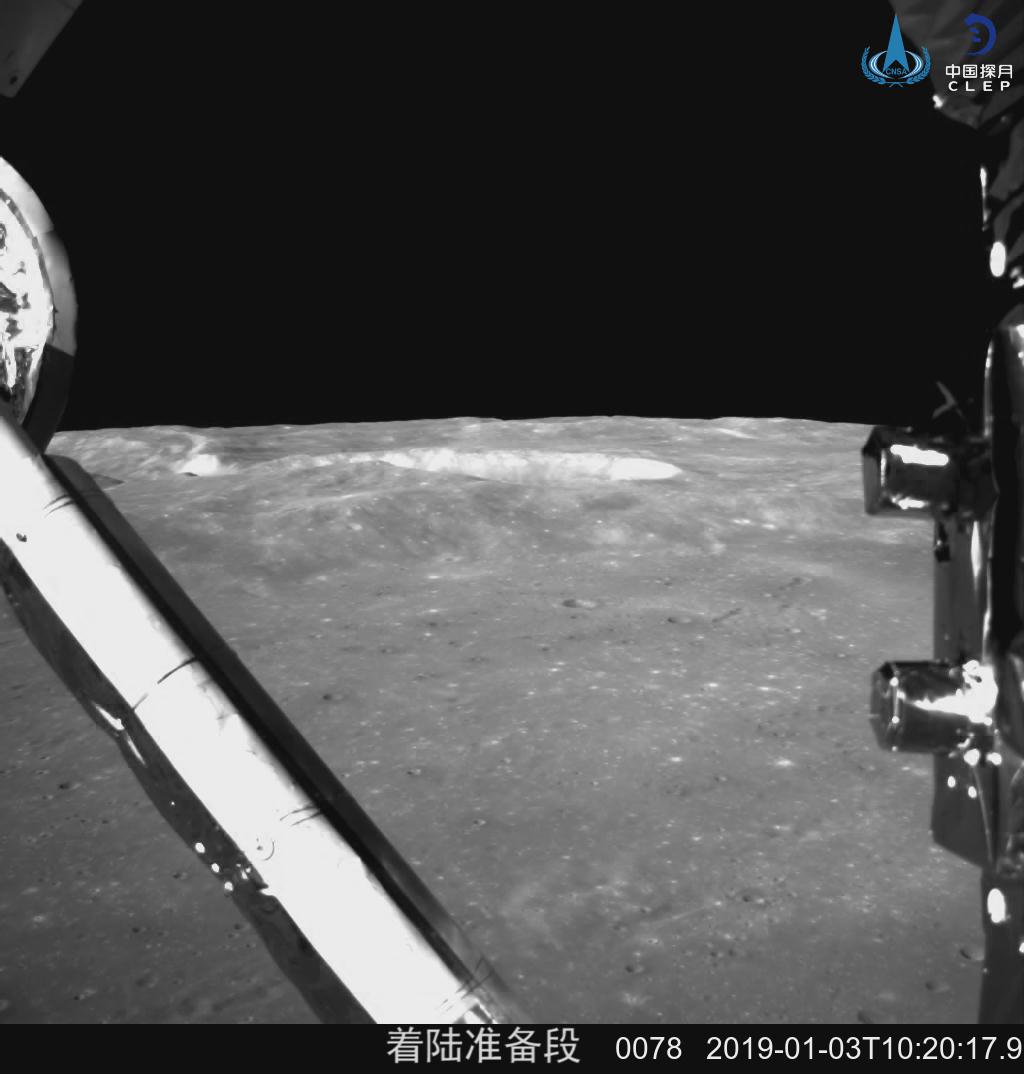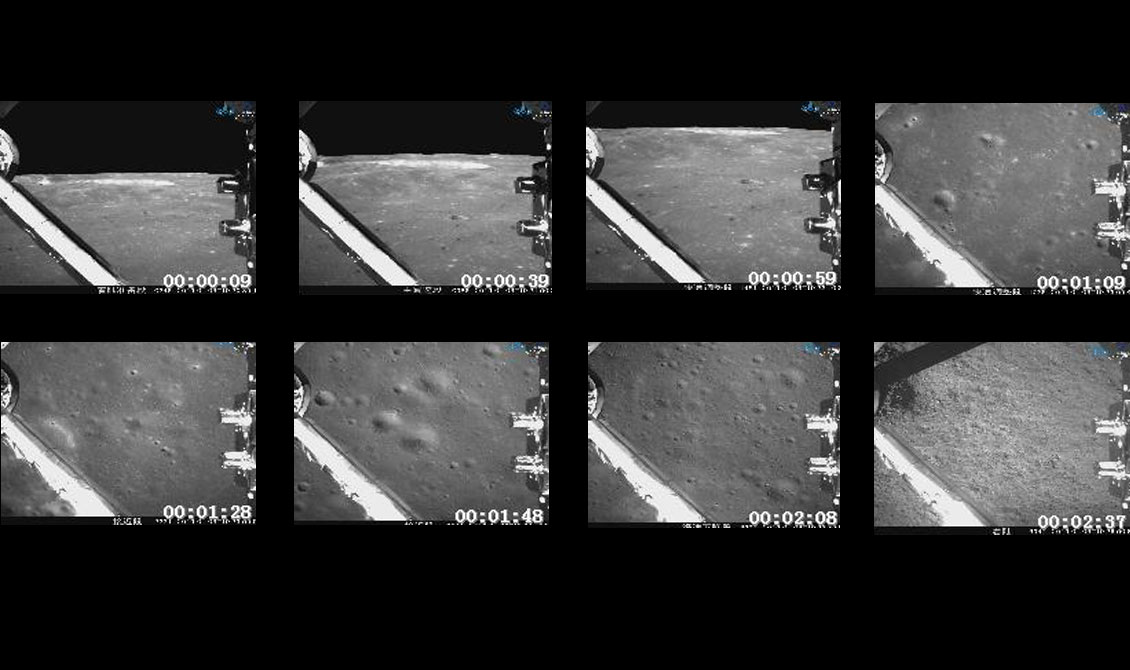Watch China Land on the Moon's Far Side in This Awesome Video!
A spectacular new video gives a lander's-eye view of the first-ever touchdown on the moon's mysterious far side.
The nearly 3-minute video was captured by China's Chang'e 4 mission, which landed inside the 115-mile-wide (185 kilometers) Von Kármán Crater on the night of Jan. 2.
The black-and-white footage begins with a nice view of the battered lunar landscape set against the blackness of space. About 1 minute in, the camera pivots downward. Dozens of small craters on Von Kármán's floor come into sharper view as the spacecraft makes its way toward the surface. [Photos from the Moon's Far Side! China's Chang'e 4 Lunar Landing in Pictures]
Then, Chang'e 4 pauses its descent briefly, probably sussing out the safest place to touch down. Satisfied, the spacecraft heads groundward again. We see a flurry of dust kicked up by Chang'e 4's descent engines, and then it's all over — the historic landing is in the books.
Chang'e 4 consists of a stationary lander and a six-wheeled rover, which the mission team has named Yutu 2. (The original Yutu was the rover on the Chang'e 3 mission, which landed on the moon's near side in December 2013.)
The Chang'e 4 lander and rover carry eight scientific instruments between them, which the spacecraft are using to characterize the surface and near subsurface of Von Kármán's floor. The mission's observations should shed light on the structure and evolutionary history of the moon, Chinese space officials have said.
Such data could also help scientists understand why the far side, which always faces away from Earth, is so different than the near side. For example, dark volcanic deposits called maria cover much of the near side's surface but very little of the far side.
Get the Space.com Newsletter
Breaking space news, the latest updates on rocket launches, skywatching events and more!

The mission's data come to Earth via a relay satellite called Queqiao, which China launched to a gravitationally stable spot beyond the moon in May 2018. (Direct communication with surface craft on the far side is impossible, because signals would have to travel through the moon.)
Chang'e 4 also carries a biological experiment: a small tin containing silkworm eggs and plant seeds. The goal is to document how these organisms grow and develop in the low-gravity lunar environment.

China has launched a series of increasingly ambitious missions under its Chang'e 4 program of robotic lunar exploration, which takes its name from a moon goddess in Chinese mythology. (Yutu is this goddess's pet rabbit, by the way.) The Chang'e 1 and Chang'e 2 orbiters lifted off in 2007 and 2010, and Chang'e 3 made its successful touchdown in December 2013.
In October 2014, the Chang'e 5T1 mission launched a prototype return capsule on an eight-day trip around the moon. This project tested out gear that will be used in the Chang'e 5 sample-return mission, which could launch as early as this year, Chinese space officials have said.
Mike Wall's book about the search for alien life, "Out There" (Grand Central Publishing, 2018; illustrated by Karl Tate), is out now. Follow him on Twitter @michaeldwall. Follow us @Spacedotcom or Facebook. Originally published on Space.com.
Join our Space Forums to keep talking space on the latest missions, night sky and more! And if you have a news tip, correction or comment, let us know at: community@space.com.

Michael Wall is a Senior Space Writer with Space.com and joined the team in 2010. He primarily covers exoplanets, spaceflight and military space, but has been known to dabble in the space art beat. His book about the search for alien life, "Out There," was published on Nov. 13, 2018. Before becoming a science writer, Michael worked as a herpetologist and wildlife biologist. He has a Ph.D. in evolutionary biology from the University of Sydney, Australia, a bachelor's degree from the University of Arizona, and a graduate certificate in science writing from the University of California, Santa Cruz. To find out what his latest project is, you can follow Michael on Twitter.









